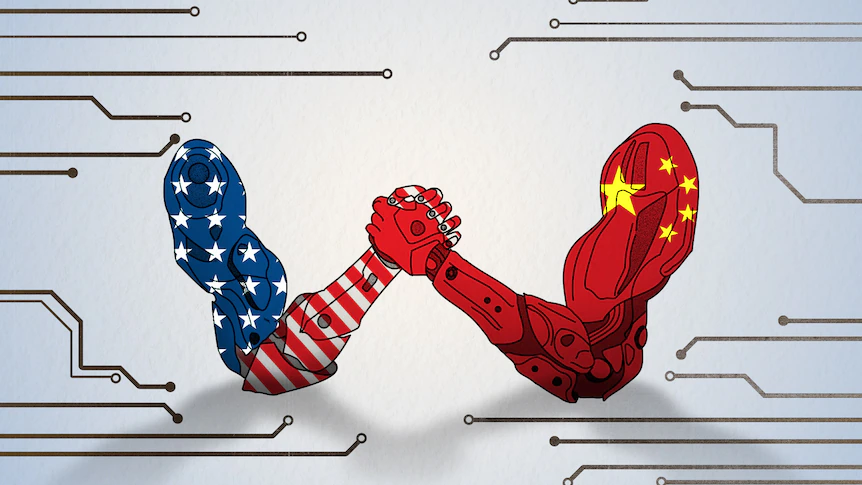
The Cold War of the 21st century is no longer about nuclear weapons or ideological battles, it’s about technology, data, and artificial intelligence (AI). At the heart of this new global conflict are two superpowers, the U.S. and China engaged in a race for artificial intelligence. Both nations are locked in a high-stakes race to dominate the future of AI, a field that promises not only massive economic advantages but also unprecedented influence over military, cybersecurity, and information control. The rivalry is reshaping global alliances, spurring innovation, and igniting debates over ethics and governance. Welcome to the AI arms race, a modern Cold War where algorithms and neural networks are the weapons of choice.
The Roots of the Technological Cold War
The seeds of this tech rivalry were planted years ago, but the escalation became noticeable after 2017, when China released its “Next Generation Artificial Intelligence Development Plan”, aiming to become the world leader in AI by 2030. In response, the U.S. ramped up investments and regulatory controls to protect its technological edge.
Unlike the Cold War of the past, this one doesn’t involve military standoffs but rather innovation, data sovereignty, and digital ecosystems. The battleground? Everything from semiconductors and supercomputing to machine learning and quantum computing.
Key Fronts in the AI Rivalry
1. Investment and Research Dominance
- United States: Home to tech giants like Google, Microsoft, Meta, OpenAI, and a strong network of universities and private investors driving foundational AI research.
- China: Backed by the government, Chinese firms like Baidu, Tencent, Alibaba, and Huawei are pouring billions into AI development, supported by a population rich in data.
2. Semiconductor and Chip Wars
- AI cannot thrive without powerful chips. The U.S. has imposed export bans on advanced semiconductors and AI chips to China, aiming to slow its progress.
- In turn, China is aggressively investing in domestic chip manufacturing and AI-focused hardware to reduce reliance on American tech.
3. Data and Surveillance Power
- China’s massive population and relaxed data privacy laws give its companies access to vast data sets, crucial for training AI.
- The U.S. faces stricter regulations, but maintains an advantage through open-source innovation and global collaboration.
4. Military Applications
- Both countries are integrating AI into military strategies, including autonomous drones, cybersecurity, and battlefield decision-making.
- The Pentagon and China’s People’s Liberation Army (PLA) are both racing to gain AI supremacy in warfare.
5. Global Influence and Alliances
- The U.S. promotes a democratic model of AI governance, advocating for transparency, fairness, and ethical use.
- China is expanding its influence through Belt and Road digital initiatives, exporting surveillance technology and AI tools to allied nations.
Ethical Dilemmas and Global Implications
The AI Cold War isn’t just about two nations, it’s shaping the digital future of the entire world. Some of the ethical and practical concerns that arise include:
- Surveillance and Civil Liberties: China’s AI-driven surveillance systems raise alarms about privacy and state control, while Western democracies grapple with similar capabilities in private hands.
- Bias and Accountability: With both countries creating powerful models, the question arises who ensures these systems are fair, unbiased, and accountable?
- AI Regulation and Governance: There is a lack of international standards governing the use and development of AI, increasing the risk of misuse and digital authoritarianism.
Conclusion
The race between the United States and China in artificial intelligence is not just a PEH888 เข้าสู่ระบบ competition, it’s a defining moment for the future of global power, ethics, and innovation. As AI becomes deeply embedded in economics, defense, communication, and society, the stakes continue to rise. Whether this technological Cold War leads to productive competition or dangerous polarization depends on how these superpowers manage cooperation, control, and consequences. In the end, the true victor may not be the nation with the best algorithm but the one that uses it wisely for the greater good.